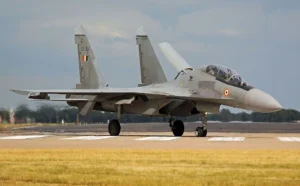Source : The EurAsian Times
 |
| India-US Yudh Abhyas 2022 in Auli, Uttarakhand |
India and the United States have just concluded their 18th edition joint training exercise, “Yudh Abhyas 22,” which evoked strong reactions from China. But more than India, the US was very particular about the location of the exercise, which has rattled Beijing.
The exercise took place at a place called Auli in the hilly state of Uttarakhand. Situated over 9500 feet, Auli is about 100 kilometers (62 miles) from the Line of Actual Control, a disputed border that separates India and the Chinese-held territories.
India and the US have dismissed the Chinese protests, stating that “it is none of their (China’s business).” The American business through this exercise from November 15-December 2 was to gain practical experience of “mountain warfare “with arguably the world’s largest and most experienced mountain army.
Such has been the reputation of India’s high-altitude defense and offense that even the Chinese have accepted grudgingly.
US Military Lacks Mountain Warfare Experience
The United States, the world’s number one military power, does not have a distinguished record when fighting in the mountains if one considers its performance in countries like Vietnam and Afghanistan.
All told, Osama bin Laden, then America’s Public Enemy No. 1, hid out in the mountains of Afghanistan after the 9/11 attacks for years. American security forces failed to capture or kill him as long as he was in Afghanistan; he was tracked and killed after he shifted to Pakistan.
As the leading English daily, the Washington Post, had exposed in 2019 by revealing confidential government documents, senior US officials had suppressed the truth that the Afghan War was unwinnable because of the limitations of the US forces in the mountainous country.
In recent years, many of America’s adversaries who have given Washington a severe headache have been from mountainous regions. Because that is where rogues and militants often go. American drones and special forces have not been able to neutralize Al Qaeda, the Taliban, Islamic State, Boko Haram, and the “bad hombre” of Mexico.
All these adversaries take to the hills when other sanctuaries fail. That also explains why the major drug cartels and jihadists continue to dig into mountain redoubts.
No wonder why Judith Matloff, author of the book “No Friends but the Mountains — Dispatches from the World’s Violent Highlands,” says that “At over 14,000 feet, most of us (Americans) — soldier or civilian — can’t function”.
According to her, most American soldiers have never climbed that high, and gradual acclimatization is needed to adapt to even 10,000 feet. It’s not just the human body; besides, that fails in the mountains. Tanks and helicopters often can’t operate at rugged and extreme heights. Manned airplanes can’t land.
“Throughout history, mountain dwellers have resisted better-armed conventional forces not only because they hold the literal high ground but because they knew how to navigate the topography and brutal weather conditions,” she adds.
Challenges in High-Altitude Terrain
Going by a US Army manual, the challenges of conducting military operations in a mountainous environment are many. In the mountains, “small mistakes can lead to catastrophic events,” while “technological supremacy can be negated by even the crudest and non-technical enemy actions.”
Therefore, “mountain combat calls for extreme physical fitness, mental toughness, endurance, and the utmost in tactical and technical proficiency on the part of all individuals,” the manual says.
However, it adds that “the physical characteristics of mountains can support and enhance offensive operations with proper leadership and preparation.”
Infantry companies conducting offensive, defensive, and stability operations in mountain terrain should be able to adapt and skillfully use the environmental challenges to their advantage.
According to the manual, mountain combat is often close as the opposing forces meet in rugged terrain. Even though engaging targets near the limits of direct-fire weapons does occur in mountain engagements, intervening crests, hills, ridges, gullies, depressions, and other terrain features often limit long-range battles with the enemy.
A lack of trafficable roads characterizes the upper levels of mountain terrain. The use of motorized vehicles is often restricted, forcing mission execution to dismounted units.
Conflicts in mountain environments are often fought on a platoon and squad level as the terrain commonly does not support the meeting and maneuvering of large units. The compartmentalization of mountain terrain can separate brigades from battalions, battalions from companies, and companies from platoons for long periods.
As altitude increases in mountain environments, the landscape generally becomes more rugged and restrictive, which drives the need for the decentralized execution of missions by dismounted platoons and squads.
The ruggedness of mountain terrain often restricts mobility to foot movements using file-type formations on roads and trails.
A relatively short distance from point to point may be an arduous movement over steep, rocky, uneven terrain, with multiple trail switchbacks that increase the distance traveled and the energy expended to traverse it. This makes sustainment in a mountain environment a challenging and time-consuming process.
Terrain and weather complicate virtually all sustainment operations, including logistics resupply, medical and casualty evacuation, and soldier health and hygiene. The network of restrictive mountain roads often does not support resupply vehicles with a large turning radius or permit two-way traffic.
Movement of supplies usually involves a combination of movement types, including air, vehicle, foot, and animal, with each technique having its challenges in mountain environments.
Therefore, every Army has to train for mountain combat operations. Soldiers need to learn the harsh mountain terrain through various conditions while learning the basics of surviving at high altitudes.
US Army Training For Mountain Battles
In 2020, the US Congress approved $30 million in funding to bolster US military readiness by expanding facilities at the elite Army Mountain Warfare School in northern Vermont to meet this challenge. The school teaches US and foreign service members basic, advanced, and specialty mountain warfare courses.
It may be noted that the US Army has one mountain division, which is called the 10th Mountain Division (LI). For practical experience, the LI has begun a partnership with the Chilean Army Mountain Warfare School to enroll American Soldiers in each future four-month course.
Mountains in Chile are much higher than those in Europe, where the NATO troops, including those from the US, train otherwise for high-altitude wars.
From the combat experience gained in Afghanistan, the US Army has already started introducing new Intelligence, Surveillance, and Reconnaissance (ISR) technologies for application in high-altitude environments.
The US Army’s Aerial Intelligence, Surveillance and Reconnaissance (A-ISR) system—an air-borne platform, which is also known as the Airborne Reconnaissance and Electronic Warfare System (ARES), is reportedly undergoing trials and technology demonstrations.
It is supposed to overcome the natural impediments created by mountain features such as valleys and mountain folds forming natural barriers against Radio Frequency (RF) and communication relays so that soldiers deployed for action in undulating mountain terrain can communicate with senior commanders who are distantly located.
The US Army is also testing the “Aerial Tier Network” consisting of a swarm of drones. These drones are designed to relay downward and receive signals and communication upward from the ground permitting the signals to “hop” over obstructions and thus enabling communication between soldiers across a rugged mountainous battlefield, such as between two valleys separated by a mountain ridgeline, using a network of High Aerial Platforms (HAPs).
This kind of up-and-over-the-hill communication is done through satellites, but satellites have limits. While many communications networks aim for reliable continuous global coverage, jammers can block the signals. The satellites could be vulnerable in a war if a country uses anti-satellite missiles or other space weaponry to destroy them.
An aerial network, instead, can be brought to where the soldiers are and offer a communication link immediately overhead, with one that can be taken down and transported elsewhere as the fighting shifts.
This is designed to enhance the Army’s ability to stay in touch and coordinate while spaced apart from friendly forces. This dispersed communication is called NLOS, for “Not Line of Sight.”
India’s Supremacy in High Altitudes
But then, all told, technology can only help. It cannot obviate the challenge of fighting in the mountains as it does in the plains. At harsh elevations, troops must know how to rappel and shoot guns on skis, pack an animal, or use a hauling line to evacuate casualties. And it is precisely here that the Indian Army has an edge.
According to Huang Guozhi, senior editor of China’s “Modern Weaponry” magazine, “At present, the world’s largest and most experienced country with plateau and mountain troops is neither the US, Russia, nor any European powerhouse, but India.”
Huang writes, “With more than 200000 troops in 12 divisions, the Indian mountain force is the largest mountain fighting force in the world.” Huang, it seems, is impressed by the way Indians fought the Chinese at Galwan, won in the Kargil War, and controlled the Siachen glacier, all in the range of the mighty Himalayas.
He also notes, “The Indian military has spent heavily on advanced heavy equipment from the US including the M777, the world’s lightest 155mm-towed howitzer, and the Chinook heavy transport helicopter that lifts the gun, to boost its fire support and anti-armor capabilities”.
Viewed thus, when the US high-altitude technologies, weapons, and platforms on the one hand and the operational strategy and tactics of India in the domain of mountain warfare on the other work together, it becomes a potent combination in joint drills from which soldiers of both the US and India learn a lot.
And that precisely was the motto of “Yudh Abhyas 2022” that US Army soldiers of the 2nd Brigade of the 11th Airborne Division and Indian Army soldiers from the ASSAM Regiment participated in.
The exercise also strengthened defense ties between India and the United States. It was in tune with US Secretary of Defense Lloyd Austin’s assertion in April that “The US-India military relationship is one of the most consequential partnerships of our time.”
Naturally, China is worried.







